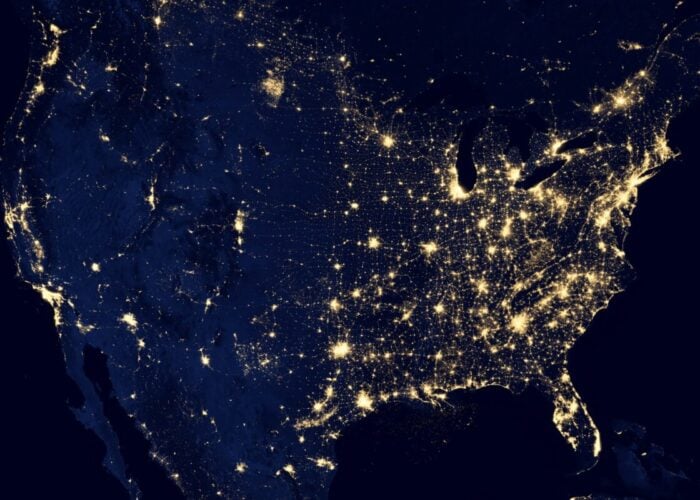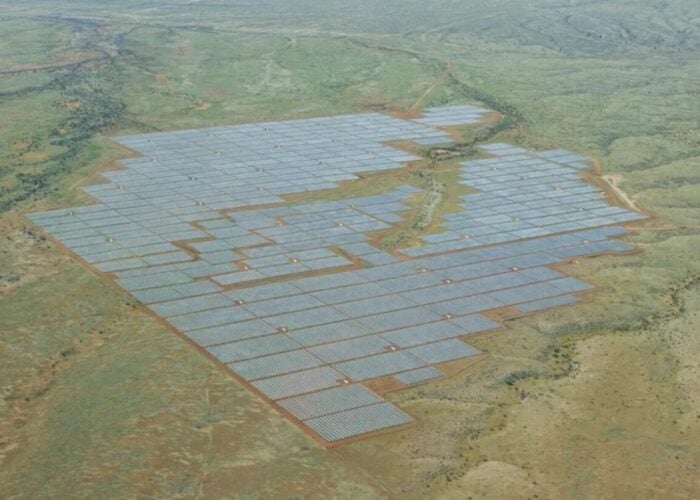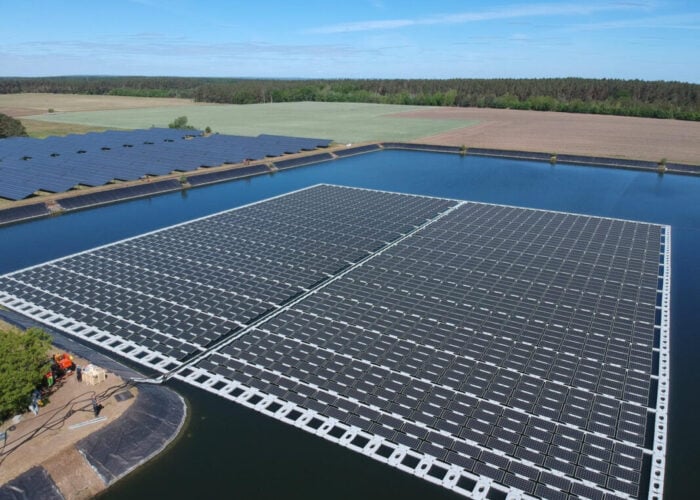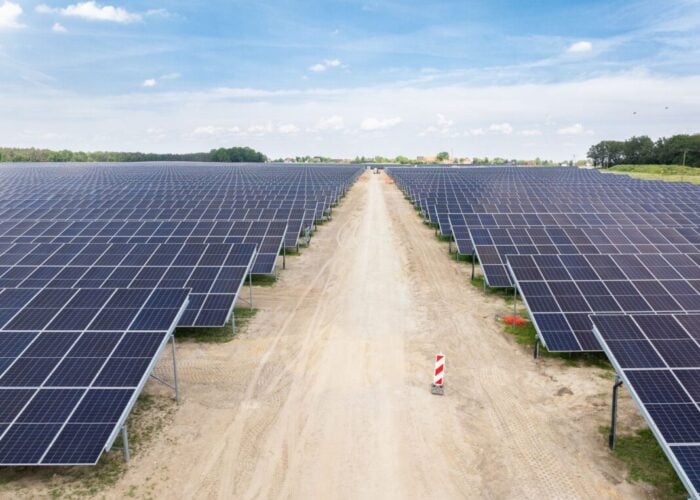Rensselaer Polytechnic Institute (RPI) scientists have produced an
optical coating with almost the same refractive index as air (Nature
Photonics, March 2007). This means that its light reflection properties
are practically zero. RPI claims a world record by decreasing the
reflectivity compared to conventional anti-reflection coatings by an
order of magnitude.
An optical coating made from the material that enables vastly
improved control over the basic properties of light, the team reports.
Potential applications of anti-reflection coatings made from the
material include much brighter LEDs, more efficient solar cells, and a
new class of “smart” light sources that adjust to specific
environments.
Unlock unlimited access for 12 whole months of distinctive global analysis
Photovoltaics International is now included.
- Regular insight and analysis of the industry’s biggest developments
- In-depth interviews with the industry’s leading figures
- Unlimited digital access to the PV Tech Power journal catalogue
- Unlimited digital access to the Photovoltaics International journal catalogue
- Access to more than 1,000 technical papers
- Discounts on Solar Media’s portfolio of events, in-person and virtual
The new material has a refractive index of 1.05,
which is extremely close to the refractive index of air and the lowest
ever reported. Window glass, for comparison, has a refractive index of
about 1.45.
The refractive index governs the amount of light a
material reflects, as well as other optical properties such as
diffraction, refraction, and the speed of light inside the material.
“The refractive index is the most fundamental quantity in optics and
photonics. It goes all the way back to Isaac Newton, who called it the
‘optical density,’” comments E. Fred Schubert, the Wellfleet Senior
Constellation Professor of the Future Chips Constellation at Rensselaer
and senior author of the paper.
Many scientists have searched
for materials that can eliminate unwanted reflections that degrade the
performance of various optical components and devices. “We started
thinking, there is no viable material available in the refractive index
range 1.0-1.4,” Schubert says. “If we had such a material, we could do
incredible new things in optics and photonics.”
The material is
produced using a technique called oblique angle deposition, which puts
silica nanorods at a 45 degree angle on top of a thin film of aluminum
nitride, a semiconducting material used in advanced light-emitting
diodes (LEDs). From the side, the films look much like the cross
section of a piece of lawn turf with the blades slightly flattened.
The
technique allows the researchers to strongly reduce or even eliminate
reflection at all wavelengths and incoming angles of light.
Conventional anti-reflection coatings, although widely used, work only
at a single wavelength and when the light source is positioned directly
perpendicular to the material.
The new coating could be used to
increase the amount of light reaching the active region of a solar cell
by several percent, boosting performance. “Conventional coatings are
not appropriate for a broad spectral source like the sun,” Schubert
says. “The sun emits light in the ultraviolet, infrared, and visible
spectral range. To use all the energy provided by the sun, we don’t
want any energy reflected by the solar cell surface.”
In
addition, current LEDs are not yet bright enough to replace the
standard light bulb. Eliminating reflection could improve the luminance
of LEDs, which could accelerate the replacement of conventional light
sources by solid-state sources. In the other direction, the team thinks
it possible to precisely control a material’s refractive index thereby
making extremely high-reflectance mirrors.
Schubert and his
coworkers have only made several samples of the new material to prove
it can be done, but the oblique angle evaporation technique is already
widely used in industry, and the design can be applied to any type of
substrate — not just an expensive semiconductor such as aluminum
nitride.
The research is funded primarily by the National
Science Foundation, with additional support from the U.S. Department of
Energy, the U.S. Army Research Office, the New York State Office of
Science, Technology and Academic Research (NYSTAR), Sandia National
Laboratories, and the Samsung Advanced Institute of Technology in
Korea. The substrates were provided by Crystal IS, a manufacturer of
single-crystal aluminum nitride substrates for the production of
high-power, high-temperature, and optoelectronic devices such as blue
and ultraviolet lasers.
By Dr. Mike Cooke






